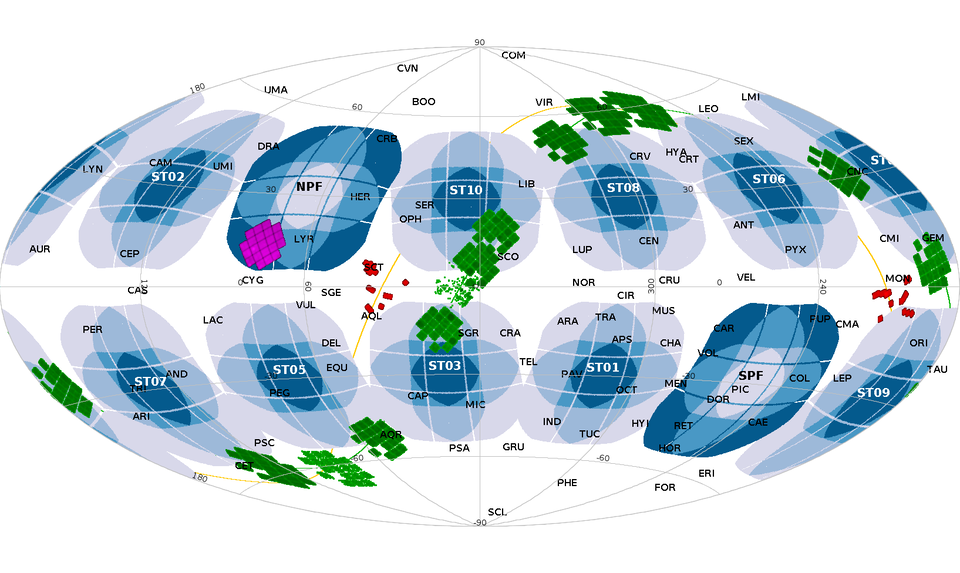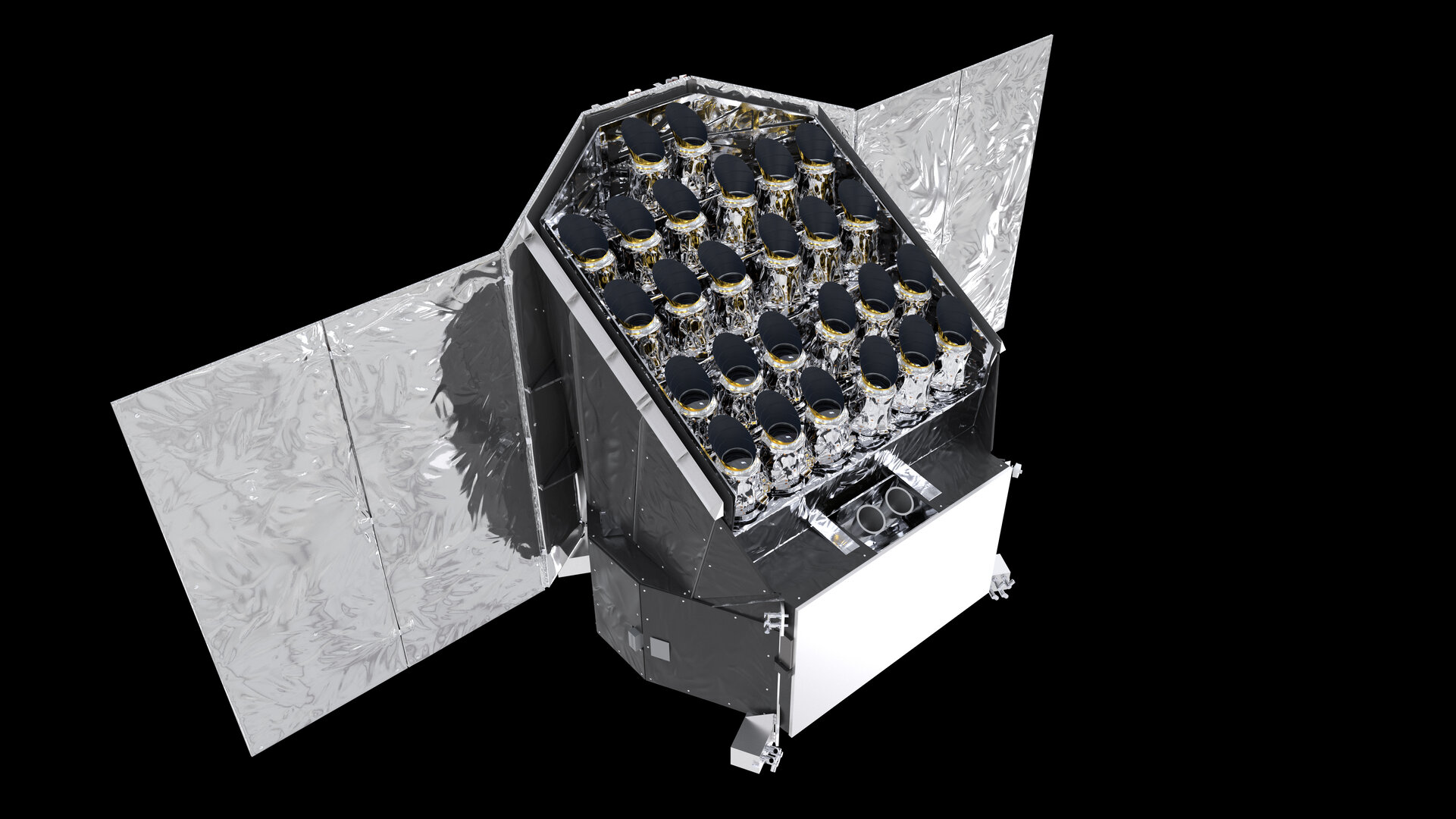Plato’s pointing technique
Plato’s design optimises the telescope’s field of view so that a large part of the sky can be imaged during an extended period.
A mosaic of cameras
Plato’s cameras are divided into four groups of six cameras with each group pointing away from each other at the same angle. This design increases the total field of view of the cameras to cover ~5% of the sky simultaneously. The four groups are arranged in such a way that their images overlap, so one part of the sky is covered by all 24 cameras and other parts of the sky are covered by 18, 12 or six cameras. This interesting mosaic gives Plato the advantage of both looking at a large part of the sky and observing each part with more than one camera, which increases its sensitivity.
Covering the sky

During its lifetime Plato will point its cameras to cover a large part of the sky. Plato is planned to have two longer phases, each with a duration of two years. During these long stares it will be possible to find small planets orbiting their host stars with orbital periods of up to one Earth year. Another option being investigated is doing a first longer phase of three years followed by multiple step-and-stare observations of two to five months each on different patches of the sky. Plato’s pointing technique allows it to see a significant larger part of the sky compared to Kepler and Corot, its planet-hunting predecessors.
Pirouette along with Earth

Plato will orbit the second Sun-Earth Lagrange Point, L2, which moves along as the Earth orbits the Sun. Staring at the same patch of the sky is not straightforward while you are constantly moving around. To continuously stare at the same patch and avoid facing the Sun, Plato needs to rotate 90° every three months.


